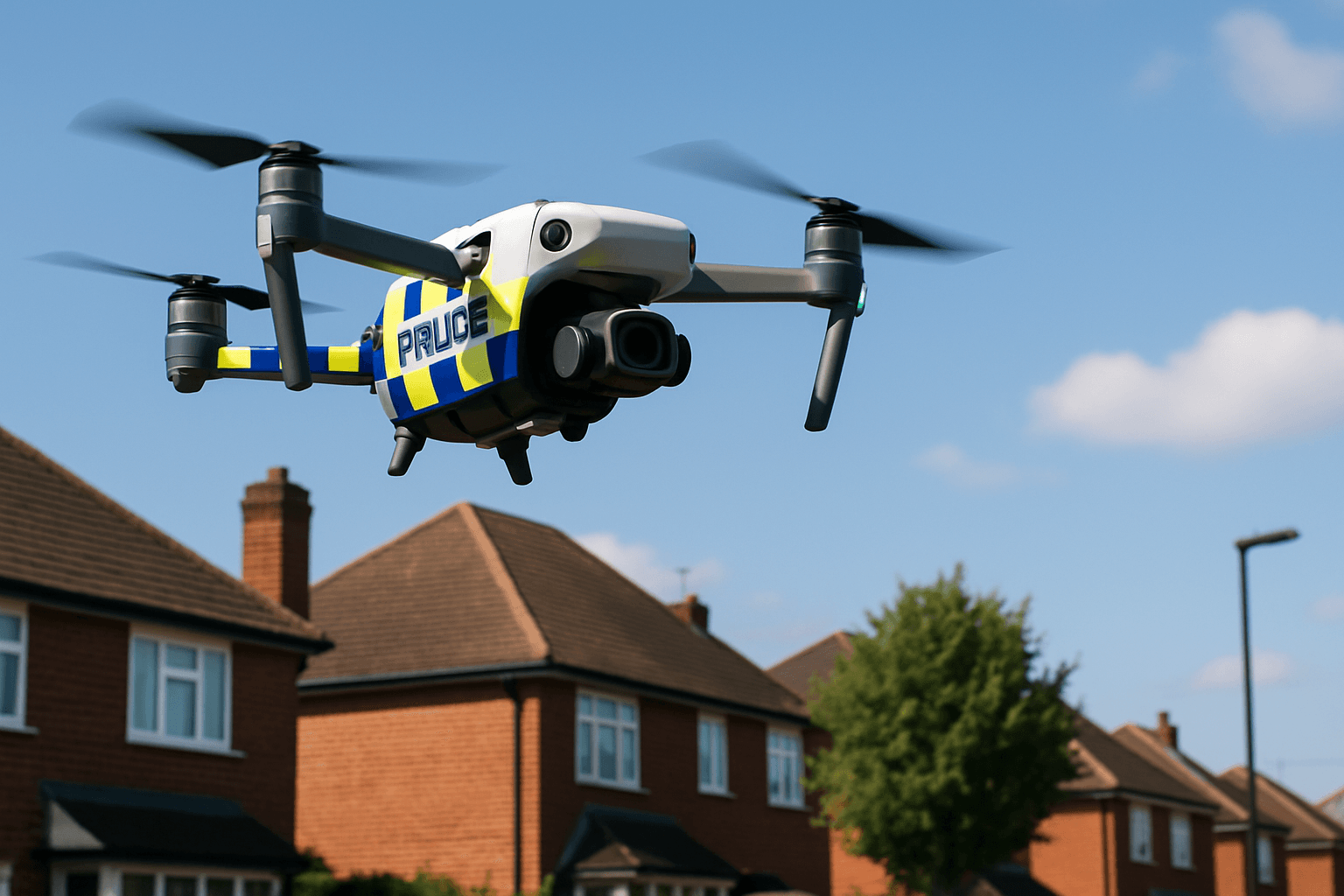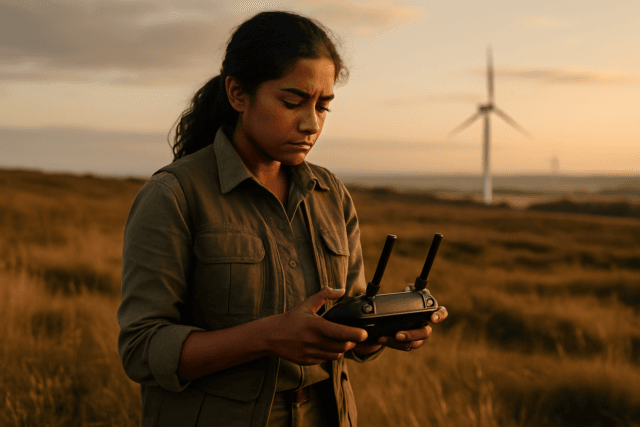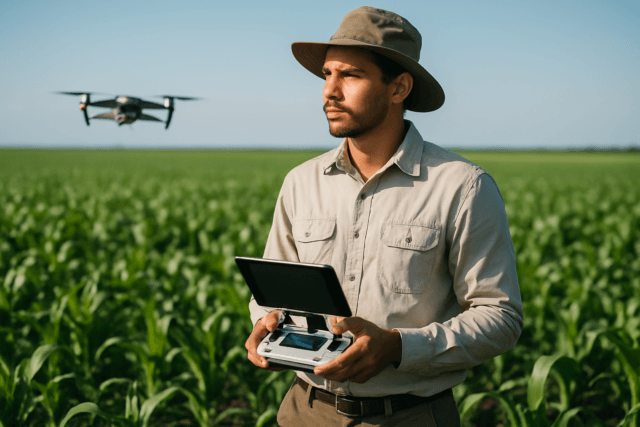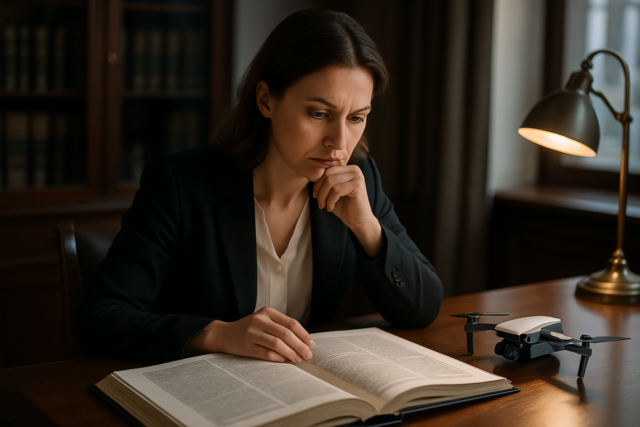Drones have become an increasingly valuable tool for law enforcement agencies in the UK, offering a range of capabilities that enhance public safety and improve operational efficiency. From providing aerial support for frontline officers to assisting in search and rescue missions, drones are transforming the way police forces operate.
The Rise of Drones in UK Policing
In recent years, the use of drones by police forces across the UK has grown significantly. As of 2023, nearly 400 drones were being used by UK police forces, with a clear desire from senior officers to explore how this technology can further support policing. A 2020 study revealed that 40 out of 42 responding UK police forces confirmed they were using drones, operating at least 288 drones in total. By March 13, 2025, drones are considered “indispensable” to policing.
This widespread adoption reflects the numerous benefits that drones offer, including cost-effectiveness, improved safety, and enhanced situational awareness. As drone technology continues to evolve, police forces are finding increasingly innovative ways to utilize these unmanned aerial vehicles (UAVs).
Key Applications of Drones in Law Enforcement
UK police forces deploy drones in a variety of operations, including routine, pre-planned, and spontaneous events. Some of the most common applications include:
- Search and Rescue: Drones are highly effective in locating missing persons, especially in large or труднодоступных areas. Equipped with thermal imaging cameras, drones can detect heat signatures, helping to find individuals trapped under rubble or in hard-to-reach locations.
- Crime Scene Investigation: Drones provide aerial photography and video of crime scenes and road traffic collisions, offering valuable evidence for investigations. The high-quality imagery captured by drones can be used in court to reconstruct events and provide a clear understanding of the scene.
- Surveillance and Monitoring: Drones are used to monitor major incidents and events, providing a bird’s-eye view of developing situations. They can also be used for surveillance of suspects and to gather evidence in a variety of policing operations.
- Crowd Control: During large public gatherings, such as the Birmingham Commonwealth Games in 2022, drones have been deployed to monitor crowds and ensure public safety. The live aerial footage provided by drones helps to coordinate and manage traffic diversions more effectively.
- Traffic Management: Drones can optimize traffic monitoring, identify congestion points, and detect accidents in real-time. This information can be used to optimize traffic light timings, redirect traffic, and dispatch emergency services promptly.
- High-Risk Operations: Drones provide over-watch for high-risk policing operations on the ground, enhancing the safety of law enforcement officers. They can monitor dangerous situations, such as hostage situations or armed standoffs, and provide critical information for planning and carrying out operations.
- Disaster Response: In the event of natural disasters or large-scale accidents, drones can quickly survey the affected areas, providing first responders with critical information about the extent of the damage and the locations of people in need of rescue.
- Border Monitoring: Drones are suspected of being deployed to monitor migration at UK borders, providing surveillance and support for border force operations.
Benefits of Using Drones
The use of drones in law enforcement offers several key benefits:
- Cost-Effectiveness: Drones are much cheaper to operate than traditional air support, such as helicopters. Charging a drone battery is significantly less expensive than fueling a helicopter, allowing for more frequent use of air support.
- Improved Safety: Drones reduce risks to officers by enabling them to assess potential threats from a safe distance. They can also enter and assess remote, inaccessible, and dangerous locations, lowering risks to officers on the ground.
- Enhanced Situational Awareness: Drones provide real-time situational awareness, giving officers a clear understanding of the environment and potential threats. This information is useful for tactical decision-making.
- Increased Efficiency: Drones help to speed up tasks and save time, for example, when searching for a missing person. They also release police helicopters to be used for more serious incidents, while still achieving aerial assistance to officers on the ground.
- Reduced Environmental Impact: As electric-powered vehicles, drones have a smaller carbon footprint than helicopters.
Challenges and Considerations
Despite the numerous benefits, there are also challenges and considerations associated with the use of drones in law enforcement:
- Regulation: Frequent changes to drone regulations can create challenges for police forces, impacting workload and requiring ongoing training.
- Resourcing: Limited resources and funding can be barriers to police drone use.
- Technical Limitations: Technical limitations such as weather resilience, battery life, and flight time can affect the efficacy of drones.
- Privacy Concerns: The use of drones for surveillance raises privacy concerns, particularly regarding the collection, storage, and use of data.
- Public Perception: Negative public perception of drone use, particularly in relation to privacy and surveillance, can be a barrier to their adoption.
- Drone Misuse: Drones can be misused for criminal activities, such as smuggling contraband into prisons or conducting illegal surveillance.
Legal Framework and Regulations
The use of drones in the UK is governed by a legal framework that includes the Air Navigation Order 2016 and the Air Traffic Management and Unmanned Aircraft Act 2021. These regulations cover a range of issues, including registration, training, and operational requirements.
Key aspects of the legal framework include:
- Registration: Operators of drones weighing over 250g must register with the Civil Aviation Authority (CAA) and obtain an Operator ID. Pilots must also pass a basic test to obtain a Flyer ID.
- Operational Authorisation: For higher-risk drone flights, such as flying over a residential area, operators need to acquire permission from the CAA.
- Flight Restrictions: Drones must not be flown over crowds, over 400ft (120m) from the ground, or in restricted airspace without permission.
- Privacy: Drone operators must respect other people’s privacy and be aware of what they can and cannot do with photos and videos.
- Police Powers: Police have the power to land, inspect, and seize drones if they suspect an offence has been committed. They also have stop and search powers around airports and prisons to tackle illegal drone use.
Addressing Drone Misuse
As drone technology becomes more accessible, the risk of misuse increases. UK police forces are responsible for policing drone misuse, responding to incidents of reckless, negligent, criminal, and malicious flight.
Common types of drone misuse include:
- Flying in proximity to manned aircraft and over sensitive sites.
- Transporting contraband into prisons.
- Conducting illegal surveillance.
- Attaching dangerous payloads, such as explosives.
To address drone misuse, police forces use a combination of educational and legislative tools. They also work with other agencies, such as the CAA, to enforce drone regulations and prosecute offenders.
Future Trends and Developments
The use of drones in law enforcement is expected to expand in the years to come. Several key trends and developments are shaping the future of police drone operations:
- Beyond Visual Line of Sight (BVLOS): The NPCC is working with the CAA to enable police forces to fly drones beyond the visual line of sight, expanding their operational capabilities.
- Drone as First Responder (DFR): Police forces are trialling the use of drones as first responders, deploying them swiftly to incidents to provide eyes on the scene.
- Artificial Intelligence (AI): AI is being integrated into drone technology, enabling drones to operate more autonomously and efficiently.
- Counter-Drone Technology: As drone misuse becomes more prevalent, police forces are investing in counter-drone technology to detect, identify, and mitigate drone threats.
- National Standards and Training: The NPCC is developing national standards for the selection, training, and currency of police drone pilots, ensuring consistent and effective use of drones across the UK.
Conclusion
Drones have become an indispensable tool for law enforcement in the UK, offering a range of capabilities that enhance public safety and improve operational efficiency. As drone technology continues to evolve, police forces are finding increasingly innovative ways to utilize these unmanned aerial vehicles. While challenges and considerations remain, the benefits of using drones in law enforcement are clear. By embracing this technology and addressing the associated challenges, UK police forces can continue to enhance their ability to protect and serve the public.





